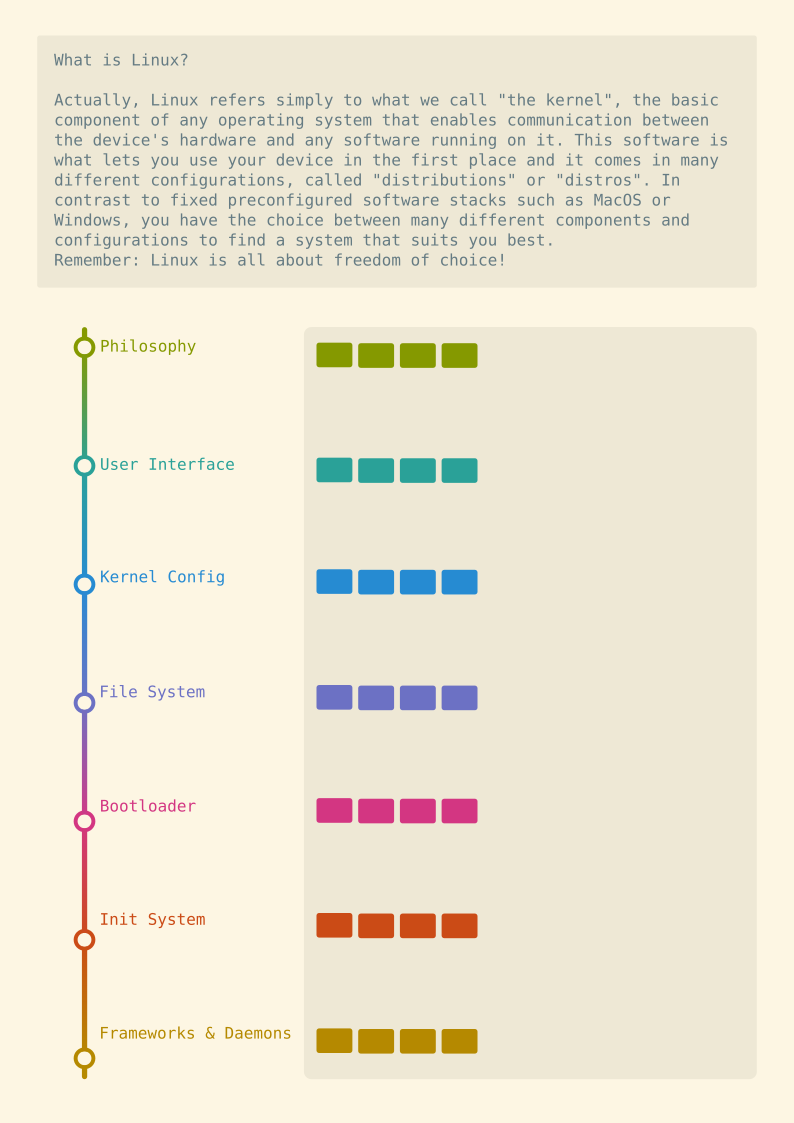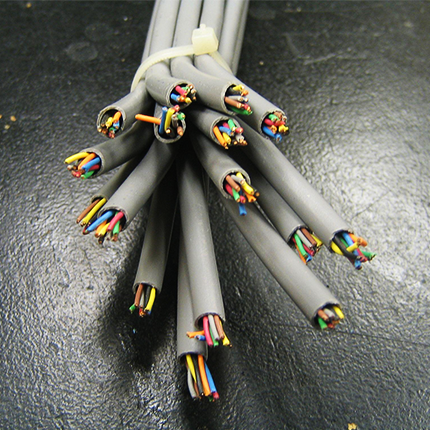We often get the same question with
“I’m new, what distro do you recommend?”
and I think we should make a list/ discussion on what is our pick for each person, and just link that post for them to give them an easy recommendation.
So I made a quick flow chart (will get polished as soon as I get your input) with my personal recommendations. It is on the bottom of the text, so you see the rest of the text here too.
I will also explain each distro in a few, short sentences and in what aspects they do differ and what makes them great.
Here are my “controversial” things I want to discuss with you first, as I don’t want to spread nonsense:
Nobara
I don’t know if we should recommend it as a good gaming distro. In my opinion, it’s a highly insecure and experimental distro, made by one individual. I mean, sure, it gives you a slightly better experience ootb compared to vanilla Fedora, but:
- As said, it’s made by one single guy. If he decides to quit this project, many many people will just stop getting updates.
- There are many security-things, especially SELinux, disabled.
- It’s severely outdated. Some security fixes take months until they arrive on Nobara.
- It contains too many tweaks, especially kernel modifications and performance enhancers. Therefore, it might be less reliable.
I think, Bazzite is the way superior choice. It follows the same concept, but implements it in way better fashion:
- Just as up-to-date as the normal Fedora, due to automatic GitHub build actions.
- No burden of maintenence, either on the user or the dev side.
- Fully intact security measures.
- And much more.
Immutable distros
I’m a huge fan of them and think, that they are a perfect option for newcomers. They can’t brick them, they update themselfes in the background, they take a lot of complexity compared to a traditional system, and much more.
Especially uBlue and VanillaOS are already set up for you and “just work”.
If you want to know more about image-based distros, I made a post about them btw :)
VanillaOS
It’s the perfect counterpart for Mint imo. It follows the same principle (reliable, sane, easy to use, very noob friendly, etc.), but in a different way of achiving that.
The main problems are:
- The team behind it isn’t huge or well established yet, except for the development of Bottles.
- They want to do many things their own way (own package manager, etc.) instead of just using established stuff.
- The current release (V2, Orchid) is still in beta atm.
I see a huge potential in that particular distro, but don’t know if I should recommend it at this point right now.
ZorinOS
I think, for people who don’t like change, it’s great, but it can be very outdated. What’s your opinion on that distro? It looks very modern on the surface and is very noob friendly, but under the hood, very very old.
Pop!_OS
Same with that. Currently, there’s only the LTS available, since System76 is currently very busy with their new DE. I don’t know if we should recommend it anymore.
I made the list of recommendations relatively small on purpose, as it can be a bit overwhelming for noobs when they get a million recommendations with obscure distros.
Do you think that there are any distros missing or a bad recommendation?

deleted by creator
Never SuSE again. #UnitedLinux

I think beginners spend too much time and effort on the “choose a distro” quest. Choosing a DE is far more important than that.
Just that you need a Distro packaging that DE. I chose KDE and never switched, but I hopped distros as they where either too old, or broken, or unstable.
5.27 on Kinoite is pretty great though. Would recommend and I think Kubuntu etc. staying with it do the right thing.
Plasma 6 works pretty well too though, so it was many many KDE problems. But as switching DE was no option, I hopped Distros.
You need to seriously up the contrast on those colors. Pink text on a slightly lighter pink text block is virtually unreadable.
The graph was just a quick sketch in my note-taking app Logseq.
I mainly wanted to know if the flowchart made sense. When I do it properly, I’ll use a different software :)
I’ll let you know if it makes sense when I can read it 😁
Right now this is literally what I see:

I’m very sorry! This is just a sketch for discussion, the final version will look WAY better and be more legible :)
Ohh no apology needed. I think doing it as a flow chart is a good idea. I just included the screenshot to make sure there wasn’t something going on where the colors were different for you vs everyone else.
I don’t have any specific beef with your chart but I do feel like we sometimes do a disservice to newbies by focusing on distros rather than the main desktop environments and what differentiates them. I wouldn’t hesitate to recommend basically any of the Fedora spins or Debian-based distros to beginners.
The choice between KDE, Gnome, Cinnamon, etc. is much more consequential for a new user than DNF vs. Apt (especially in the Flatpak era).
sorry if this is harsh but this seems like kind of a waste of time when distrochooser.de exists? I think it’d make a ton of sense to link that in the sidebar but a wall of text (or a huge flow chart) is just gonna be skipped by the type of people who are asking what distro to use first instead of researching it themselves anyway. if someone’s asking in a forum like Lemmy or even in discord servers, they usually just want quick answers. if we’re gonna link them something instead of just saying “mint” or whatever, it should at least be something easily digestible like distrochooser.de
What do you think about something like this? It’s more of a “build your own sandwich” approach.

My prefered OS is missing. Must be a bug. Plz add NixOS kthx
Already done in the final version ;) But you won’t be happy, I’ve put it into my “pain”-category :D
Guix > Nix, because I’m more angry about not being able to run the former than the latter.
Here’s a revised flowchart for you:
- You need professional software like MS Word, Autodesk, Adobe, NI Circuit Design for collaboration with others > Stick with windows;
- Any other case > Install Debian + GNOME + Software as Flatpaks. You’ll get a rock solid system with the latest software;
Done.
deleted by creator
Yeah, the Nvidia bug caused me A LOT of headache. I love Debian, but I really only use it as a server OS. On my workstations, I prefer to have easier compatibility with new hardware and software.
Debian 12 has had at least two system breaking bugs in the last month or two,
What are you talking about specifically? I do manage dozens of Debian 12 servers and run it in one of my desktop machines since the release I didn’t run into any issues so far, stable as usual but I would be interested in knowing about those.
I honestly don’t understand the love for Debian either.
Because, like Ubuntu, it’s truly community driven, not subject to the whims of some corporation and more stable than the others.
Also recommending GNOME to anyone used to Windows is just going to frustrate them if they’re already hesitant.
While I get your point and I like XFCE very much, the “what you go for it’s entirely your choice” mantra when it comes to DE is total BS. What happens is that you’ll find out that while you can use any DE in fact GNOME will provide a better experience because most applications on Linux are design / depend on its components. Using KDE/XFCE is fun until you run into some GTK/libadwaita application and small issues start to pop here and there, windows that don’t pick on your theme or you just created a frankenstein of a system composed by KDE + a bunch of GTK components;
Instead of “use anything” you could put in “Debian.”
Is your computer weird or old (<x86-64v1, arm, etc) branch.
You’d be amazed how many 32 bit systems or core systems are out there. People have tons of arm shit now too…
What distros would you recommend for those use cases?
My own example. I still have an ancient netbook lying around. It runs on an Intel Atom N270, which is only 32bit / i386. It came with Windows XP and I quickly switched to Mint, when it was still supporting 32bit.
I think the last Ubuntu release supporting i386 was 18.04 (around 2018) and all other distros started to drop i386 support after that.
AFAIK Debian is the only major distro still fully supporting i386. And a Debian based distro that still supports i386 is MX Linux. My ancient and crappy netbook is running MX Linux right now.
My ‘weird’ example. I have a Raspberry 5! It’s ARM and very new. It runs its own distro, Raspberry Pi OS (Debian based), and Ubuntu does also fully support it. Right now if you try some other distro, it probably won’t even boot unless you start tinkering a lot with it.
So Debian is definitively a choice for very old hardware. And the odd ARM SoC has usually at least some custom Ubuntu build that runs with it.
The big differences in architecture are arm, x86-64(soon to be split into v1 and v2+ if it hasn’t been already), i686 which is almost all 32 bit intel and i386(no one is actually using this!)
Not to join the chorus of model train enthusiasts itt, but Debian still maintains i686. Gentoo from source is another great option. There’s arch32 as well which I think requires that you be at least a p3.
Arm is still in a weird place and it depends on the particular implementation more often than not:
There’s Debian for arm sbcs, and there’s a different, less normal armbian that is more cheap/weird sbc oriented but also sucks in various ways. Theres also arch and gentoo for arm as well.
M1 Mac users will probably want asahi.
Actual factual i386 needers (pre-pentium) will want to run either the gentoo or bsds maintained specifically for that purpose.
Do you hate yourself, if yes then Solaris is the OS you’ve been looking for.
You need to limit the options.
Linux systems
-
Debian (stable, almost no bloatware, user unfriendly, apt)
-
ArchLinux (unstable, bleeding edge software, user unfriendly, pacman)
-
RHEL/ Fedora (semi-stable, newer software, relatively user friendly, dnf)
Then at max list 3 Systems that derive from each main OS.
Like
Debian: Ubuntu, Mint, PoP!OS ArchLinux: manjaro… Fedora: Nobara…
Where each should be user friendly to use. Also explain what stable means, like that unstable doesn’t mean shit breaks on a regular basis but rather it can sometimes happen. Normal desktop users don’t need the stability of Debian. But it is nice to have if you can live with outdated software (if it isn’t already on flatpak).
-

I really like that you want to spend time and effort into exploring this problem formulation.
At first you need to formulate the problem and the current setting and goal.
- A user searches a distro and has a minimum requirement demand.
- What are the necessary tools a distro must have in order to fit the demand of the user?
- The goal is to find a distro that fits the demand, at least the minimum.
- Does the user start with a computer or will he buy a new one?
- what are all requirements?
- which distro fits those requirements, which doesn’t, and why? Is it a out of the box problem or is just a package missing?
it’s very difficult
Imo, First requirement should be that it has to automatically boot, always. If a distro is not able to ensure this without major user input it’s not a state of the art distro. Any system has to boot always. You shall never be left with a broken system.
You have to provide info why the distro of choice is the best distro for said use case. Otherwise the reader will just pass if he doesn’t like the distro. It has to be convincing









